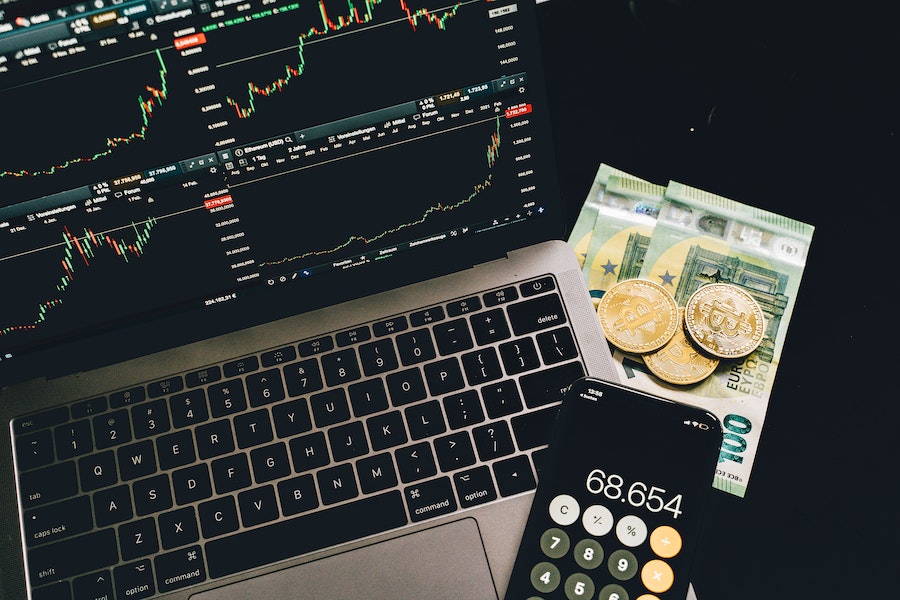
In the financial world, few concepts invoke as much intrigue and trepidation as leveraged and margin trading. The only other form of trading that sparks discussions is binary trading.
Often regarded as a relatively simpler form of trading, binary options require traders to predict if the price of an asset will rise or fall within a specific timeframe. While it offers a clear black-or-white outcome (profit or loss) and you can start here binary trading online, the risks associated are significant, much like leveraged trading.
What Is Leveraged And Margin Trading?
Leverage, in the context of trading, refers to the practice of borrowing funds to increase the size of a trade or investment. The primary allure here is the potential for amplified profits. For instance, using 10:1 leverage, a 5% price move in a trader’s favor could result in a 50% return on their initial investment. Conversely, a 5% move against the trader could result in a 50% loss.
Margin, on the other hand, is the initial deposit a trader makes to open a leveraged position. Think of it as a good faith deposit or collateral. The size of the margin determines the amount of leverage a trader can employ. If a trading platform offers 10:1 leverage, a trader might deposit $1,000 (the margin) to control a position worth $10,000.
In the cryptocurrency world, these concepts have gained traction rapidly. Platforms now offer varying degrees of leverage, from modest 2:1 ratios to more aggressive 100:1 options. But with such power in the hands of traders, understanding the underlying dynamics, risks, and rewards becomes paramount.
The Allure Of Leveraged Trading In Cryptocurrency
Leveraged trading in the cryptocurrency sphere has become an increasingly attractive proposition for a variety of reasons:
Amplified Returns
Perhaps the most compelling allure of leverage is the potential for outsized gains. A trader with a keen sense of market direction can significantly boost profits using leverage. For example, in a market that moves 3% in a trader’s favor, using 10:1 leverage could result in a 30% profit on the margin.
Trading Larger Positions
With a limited capital outlay, leverage allows traders to control substantially larger positions. This enhanced buying power means that even those with modest starting capital can partake in significant trades, democratizing the trading floor to some extent.
Portfolio Diversification
Leveraged trading can also be a tool for portfolio diversification. By controlling larger positions across a range of cryptocurrencies, traders can potentially spread risk and exploit more opportunities in the market.
The Risks of Leveraged Trading
However, the heightened potential of leveraged trading comes hand-in-hand with amplified risks, especially in the notoriously volatile crypto market:
Amplified Losses
Just as leverage can boost profits, it can exacerbate losses. A small adverse move in the market can quickly erode margins. For instance, using the earlier 10:1 leverage example, a market dip of just 10% could wipe out the entire margin deposit.
Margin Calls & Liquidation
If a leveraged position moves against a trader and diminishes their margin to a critical level, they might face a margin call, requiring them to deposit additional funds. Failure to meet such calls can result in the liquidation of positions, often at unfavorable prices.
Volatility Amplification
The cryptocurrency market is known for its wild price swings, which can be further intensified with leverage. A sudden spike or drop, which is not uncommon in crypto, can lead to rapid gains or drastic losses.
Borrowing Costs
Leveraged trading isn’t free. Traders often incur interest costs for the borrowed funds, which can accumulate, especially if positions are kept open for extended periods.
Best Practices for Leveraged Crypto Trading
Navigating the treacherous waters of leveraged trading requires a combination of knowledge, discipline, and strategic thinking. Here are some best practices tailored for the crypto market:
Risk Management:
- Setting Stop-Loss and Take-Profit Levels: These predetermined price levels automatically close a position, limiting losses or locking in profits, respectively. In the rapid pace of crypto trading, these tools can be invaluable.
- Capital Allocation: It’s advisable never to use your entire capital for leveraged positions. A general rule of thumb is to allocate only a fraction of your total funds, safeguarding your portfolio from extreme market swings.
- Monitor Open Positions: Due to the volatile nature of crypto, open leveraged positions should be regularly monitored, allowing traders to make necessary adjustments swiftly.
Education and Research:
- Understanding Market Dynamics: Not all cryptocurrencies behave the same. It’s essential to study the unique behaviors, trends, and news surrounding the specific cryptocurrencies you’re trading.
- Stay Updated: The crypto landscape evolves rapidly. This involves changes in regulations, new technologies, and macroeconomic factors. Being abreast of relevant news can offer traders a competitive edge.
Platform Selection:
- Reputable Exchanges: It’s crucial to trade on reputable, secure platforms. Research user reviews, security protocols, and the track record of potential platforms.
- Understand Platform-Specific Rules: Different platforms might have varying fee structures, leverage limits, and margin call procedures. Familiarizing oneself with these can prevent unpleasant surprises.
While leveraged trading has been integral to traditional markets for decades, their entry into the cryptocurrency domain has further amplified their significance, given the volatility and dynamism of the digital currency landscape.


